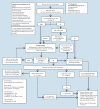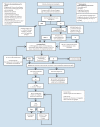[Severe courses of meningitis and encephalitis in children and adolescents]
- PMID: 36188234
- PMCID: PMC9514699
- DOI: 10.1007/s00112-022-01610-9
[Severe courses of meningitis and encephalitis in children and adolescents]
Abstract
Bacterial meningitis and viral encephalitis are infectious diseases of the central nervous system (CNS), mostly with severe sequelae up to a fatal outcome. Despite progress in prevention by vaccination, the global impact of bacterial meningitis is enormous. Before the coronavirus disease 2019 (COVID-19) pandemic, the incidence of viral encephalitis in childhood was increasing also due to the growing incidence of emerging pathogens, such as enterovirus (EV)-A71 and West Nile virus in temperate climates as well as the wider use of immunosuppressive treatment and stem cell transplantation in childhood. The following article summarizes the data on the frequency and clinical signs of infectious CNS diseases and presents the current treatment recommendations.
Die bakterielle Meningitis und die virale Enzephalitis sind die infektiösen Erkrankungen des Zentralnervensystems (ZNS), die meist mit schwerwiegenden Folgeerscheinungen bis hin zum Tod einhergehen. Trotz Fortschritten in der Prävention durch Impfungen ist die globale Krankheitslast der bakteriellen Meningitis enorm. Die Inzidenz der viralen Enzephalitis im Kindesalter war vor der durch die „coronavirus disease 2019“ (COVID-19) ausgelösten Pandemie zunehmend. Dies hängt mit der wachsenden Verbreitung von „emerging pathogens“ wie dem Enterovirus-A71 und dem West-Nil-Virus in den hiesigen Breitengraden zusammen, aber auch mit der häufigeren Anwendung von Immunsuppressiva und der häufigeren Durchführung von Stammzelltransplantationen im Kindesalter.
In der vorliegenden Übersichtsarbeit werden Häufigkeit und klinische Zeichen von infektiösen ZNS-Erkrankungen zusammengefasst und die aktuellen Therapieempfehlungen dargestellt.
Keywords: Central nervous system infections; Diagnostic imaging; Emerging pathogens; Lumbar puncture; Management.
© The Author(s), under exclusive licence to Springer Medizin Verlag GmbH, ein Teil von Springer Nature 2022.
References
-
- Dubos F, Korczowski B, Aygun DA, Martinot A, Prat C, Galetto-Lacour A, Casado-Flores J, Taskin E, Leclerc F, Rodrigo C, Gervaix A, Gendrel D, Bréart G, Chalumeau M. Distinguishing between bacterial and aseptic meningitis in children: European comparison of two clinical decision rules. Arch Dis Child. 2010;95:963. doi: 10.1136/adc.2010.186056. - DOI - PubMed
Publication types
LinkOut - more resources
Full Text Sources




